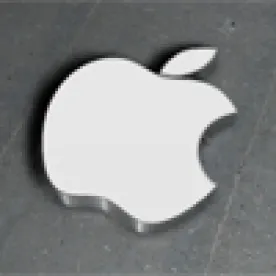In one of the latest decisions in the Apple/VirnetX saga, the US Court of Appeals for the Federal Circuit reiterated that Rule 36 affirmance can create collateral estoppel. VirnetX Inc. v. Apple, Inc., Case Nos. 17-2490, -2494 (Fed. Cir. Dec. 10, 2018) (O’Malley, J).
Apple filed two petitions for inter partes review of a VirnetX patent, challenging claims over various combinations involving a non-patent literature publication (RFC 2401). After the Patent Trial and Appeal Board (PTAB) instituted on the petitions, VirnetX filed a patent owner response in each proceeding arguing that, as a threshold matter, RFC 2401 was not a printed publication under 35 USC § 102(b) as of the critical date. The PTAB found in its final written decision that RFC 2401 was a printed publication and that the challenged patent was obvious. VirnetX appealed.
While this appeal was pending, the Federal Circuit decided VirnetX v. Apple, 715 F. App’x 1024 (Fed. Cir. 2018) (VirnetX I), appealing seven prior final written decisions in which the PTAB had found that RFC 2401 art combinations rendered obvious related patents. VirnetX had similarly argued that RFC 2401 was not a printed publication as of the same critical date, but the PTAB disagreed. The Federal Circuit summarily affirmed the PTAB’s decisions pursuant to Fed. Cir. R. 36.
Apple submitted a notice of supplemental authority, notifying the Federal Circuit of the relevant VirnetX I Rule 36 judgment. Apple believed that the VirnetX I judgment collaterally estopped VirnetX from relitigating the printed publications issue. VirnetX denied any collateral estoppel and maintained that it preserved a separate constitutional challenge in its brief.
Collateral estoppel or issue preclusion applies where the elements are “carefully observed.” B & B Hardware v. Hargis Indus., 135 S. Ct. 1293, 1306 (2015). A party is collaterally estopped from relitigating an issue if (1) a prior action presents an identical issue, (2) the prior action actually litigated and adjudged that issue, (3) the judgment in that prior action necessarily required determination of the identical issue, and (4) the prior action featured full representation of the estopped party. The Federal Circuit, in its 2017 decision in Phil-Insul Corp. v. Airlite Plastics Co. (IP Update, Vol. 20, No. 5), explained that a Rule 36 judgment may serve as a basis for collateral estoppel so long as these elements—including the element that the resolution of the issue was essential or necessary to the Rule 36 judgment—are carefully observed.
Here the parties disputed only the third question—whether RFC 2401 being a printed publication was necessary or essential to the VirnetX Ijudgment. The Federal Circuit concluded that it was, because (1) each ground of unpatentability appealed in VirnetX I relied on RFC 2401, (2) three of the seven final written decisions raised only whether RFC 2401 was a printed publication, and (3) VirnetX even conceded during oral argument that the printed publication issue was “indeed a threshold issue [in VirnetX I]” (emphasis added). Accordingly, the Court found that VirnetX was collaterally estopped.
The Federal Circuit noted that even without collateral estoppel, it would affirm the PTAB, given the “similar record” and thus the likelihood that the same conclusion would be reached (i.e., that RC 2401 was a printed publication).
Although VirnetX tried to point to the separate issue of whether IPR procedures apply retroactively to pre-America Invents Act patents, the Federal Circuit found VirnetX’s single opening brief paragraph (filed prior to the Supreme Court of the United States’ decision in Oil States) insufficient to provide any arguments specifically preserving the retroactivity issue (or under a very generous reading, arguably a general Seventh Amendment challenge). The Court noted VirnetX’s concession during oral argument that it “didn’t specifically brief” the retroactivity issue, and noted that VirnetX did not develop this argument post-Oil States or until Apple submitted its notice of supplemental authority.
Practice Note: Another recent case confirms that Rule 36 affirmances must be considered, but their impact on invalidity and mooting infringement damages may not be certain. In an appeal by Apple on other VirnetX patents, the Federal Circuit upheld, on Rule 36 grounds, a district court infringement judgment, but did not rule yet on whether to affirm PTAB decisions invalidating the asserted patents, leaving a $440 million judgment potentially still in play. VirnetX Inc. v. Cisco Sys., Inc., 18-1197 (Fed. Cir. Jan. 15, 2019).



 />i
/>i
